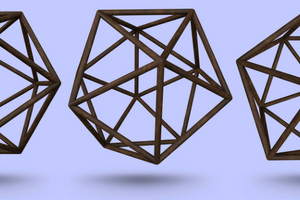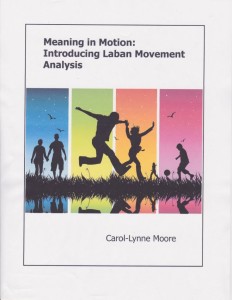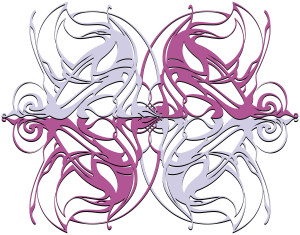 “Why are we learning this?” Anyone who has ever taught Space Harmony will have heard this question from students. In fact, many Certified Movement Analysts have themselves struggled with this part of Laban’s work. But the study of Choreutics is worthwhile, and in blogs across the next two months I will explain why.
“Why are we learning this?” Anyone who has ever taught Space Harmony will have heard this question from students. In fact, many Certified Movement Analysts have themselves struggled with this part of Laban’s work. But the study of Choreutics is worthwhile, and in blogs across the next two months I will explain why.
To begin with, performing well-known sequences — the Axis, Girdle, and A and B Scales — helps to develop many body-level skills. These peripheral and transverse sequences follow oblique trajectories in the space around the body. To reach the signal points in the kinesphere prescribed by Laban, the mover must abandon the security of remaining vertically aligned (i.e., in plumb with gravity) and tilt the whole body, shifting between the cardinal planes in big movements that sweep through space.
To do so necessitates active mobilization of weight shifting through the lower body, as well as a full range of motion and the use of gradated rotation in the upper body. And that is not all. To execute these sequences well, the mover must establish a good upper/lower connection, integrate three-dimensional shaping through the torso, and utilized active counter-tension among the limbs.
When Laban designed these sequences nearly a hundred years ago, he wanted dancers to break out of the stasis of ballet, with its emphasis on the cardinal directions. He certainly succeeded, for his Choreutic sequences require a synthesis of bodily skills. Rather than finding and maintaining a fixed placement, the dancer is asked to develop a mobile balancing capacity. The reward is full access to three-dimensional space!
Challenge your own understanding of Choreutics in MoveScape Center’s “Advanced Space Harmony Workshop” in New York City in December. Find out more….

 In July, with the Octa workshop, “Bringing Choreutics to Life,” I took these theories forward into practice. During this intimate three-day workshop, we reviewed well-known Choreutic sequences to illuminate their rational structure and to explore how Laban’s ideas can be transformed into rich kinesthetic and expressive experiences, integrating body and mind.
In July, with the Octa workshop, “Bringing Choreutics to Life,” I took these theories forward into practice. During this intimate three-day workshop, we reviewed well-known Choreutic sequences to illuminate their rational structure and to explore how Laban’s ideas can be transformed into rich kinesthetic and expressive experiences, integrating body and mind. by Kathie Debenham
by Kathie Debenham by Laurie Cameron
by Laurie Cameron In the Vaccination Theory of Education, students are led to believe that once they have “had” a subject, they are immune to it and need not take it again.
In the Vaccination Theory of Education, students are led to believe that once they have “had” a subject, they are immune to it and need not take it again. by Nancy Beardall
by Nancy Beardall “Meaning in Motion is one of the few, if not the only, contemporary texts to integrate historical, theoretical, and creative frameworks for understanding and studying Laban Movement Analysis,” writes Dr. Andrea Harris, University of Wisconsin, Madison.
“Meaning in Motion is one of the few, if not the only, contemporary texts to integrate historical, theoretical, and creative frameworks for understanding and studying Laban Movement Analysis,” writes Dr. Andrea Harris, University of Wisconsin, Madison.

